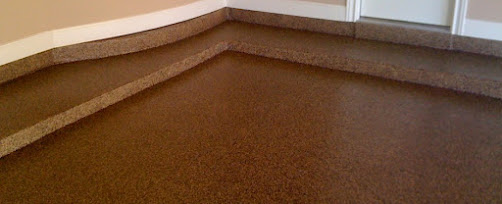Rid Basements of Mold and Mildew With Epoxy Encapsulation
Many older homes and buildings have developed dangerous levels of spores from mold and mildew growing in basement walls and floors. To be free of those health hazards and to avoid them returning encapsulation is being used more and more frequently. Plaster and lath, cement block, poured cement footings and other basement surfaces often get wet or damp. The microscopic cavities in many basement wall and floor surfaces become a natural place for spores to grow. Those odors and heavy air you breath when in some basement areas can now be made fresh and kept that way. The trick is to kill the growth and then seal the pores so that even if wet there is no place for contaminants to grow. Think of a plastic picnic plate. The plastic air dries quickly and there is no place for growths to hide.
To encapsulate your basement surfaces you first need to clean them. A grit type swivel scrub brush works well for your walls. We first use a high epoxy garage flooring Albuquerque alkaline cleaner and water to scrub all the surfaces. If you have a floor surface it is easiest to use a rotary scrubber similar to what a school custodian would use but your scrub brush can do the job with some effort. Now, use your wet dry vacuum to suck up the detergent water and dirt. If you have a floor drain use your squeegee to get it to the drain. Often there is some foam and a defoamer can help save time but just put it in your vacuum or directly in the drain. You don't want the silicones in the defoamer to create an adhesion problem for your coating.
Next, use an acidic cleaner with rinse agents and detergents. This will open up your surfaces for good adhesion. You may want to use a vapor mask for the acidic cleaning as some annoying vapors may result. Scrub rinse and don't hesitate to use plenty of water. I like to use a garden hose. People are often surprised in those old basement areas to find that yes they do have cement floors, that was just decades of dirt over them. Now let the surfaces dry thoroughly. You may need to pump fresh air into the area with fans because the closed areas may develop a dew point that just hates to let the surface dry.
Now comes the fun part, encapsulating the surfaces with epoxy floor seal. For very rough surfaces with plaster holes, craggy stone or cement 100% epoxy may be needed. You can brush, or roll it on but the best way is to spray if you want all pits and gaps to be filled. This is a two-coat process so don't be worried if you see your coating sinking out of site. Allow each coat to cure 15 hours. Screening the floor between coats is often a good idea. Your drips from the walls, and grains of wall surface that continue to drop onto the floor during application should be shaved off for a smooth easy to keep clean floor surface.
Because you did an aggressive cleaning job before your epoxy application you can be assured that most of your mold and mildew died under the jump from a pH level of 12 then 3.5 pH then back to neutral at 6.5 to 7 pH. Any organisms left are encapsulated Jurassic Park style as though in amber, save behind your epoxy barrier. Now if your basement walls and floor get damp, they will dry quickly and leave no little homes for your unwanted microscopic guests.

.jpg)
.jpg)
.jpg)
Comments
Post a Comment